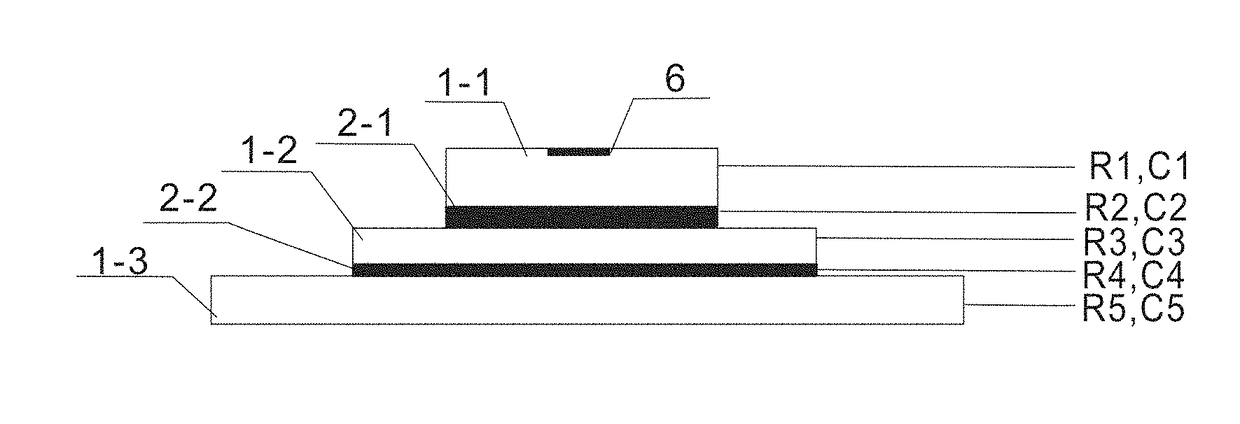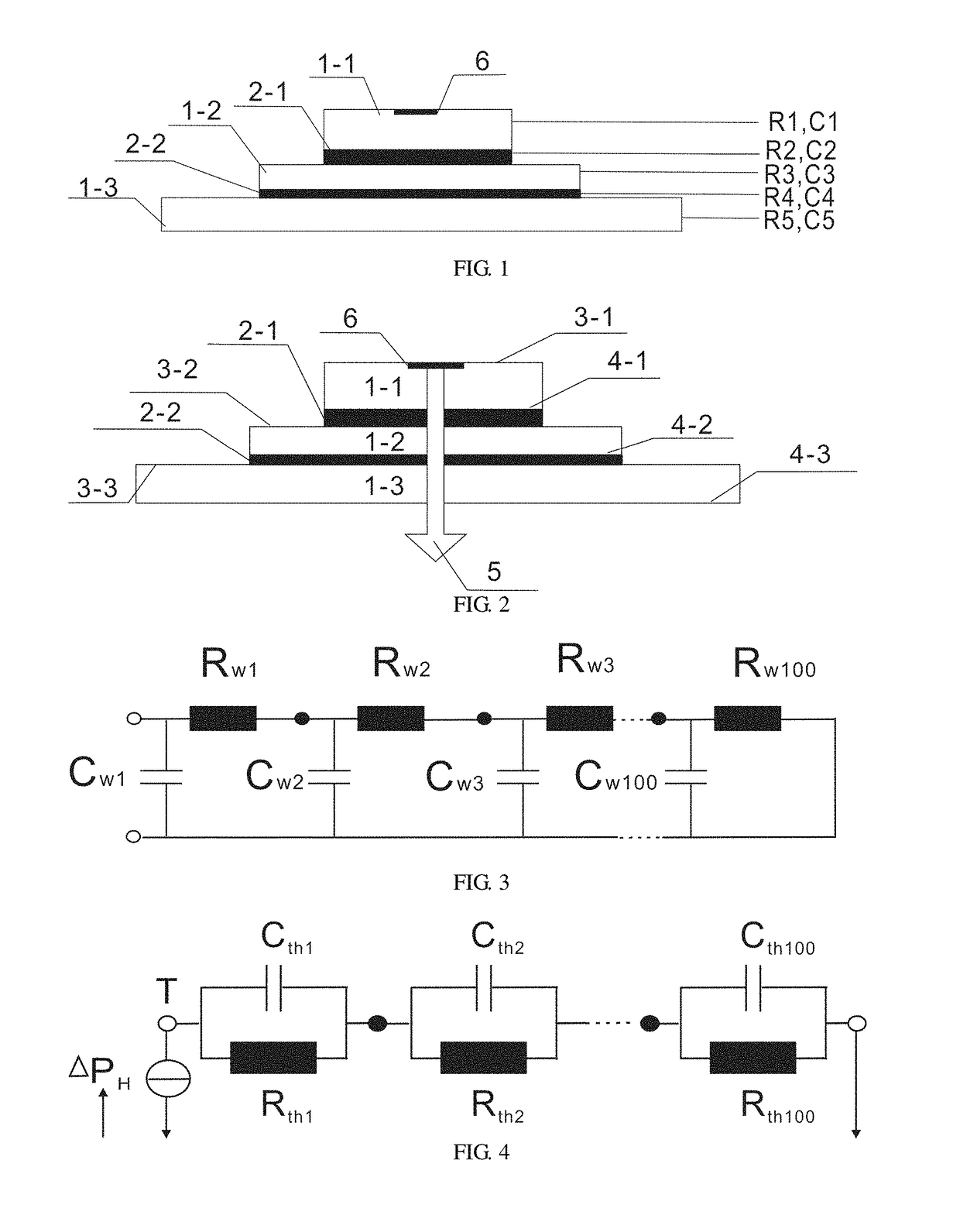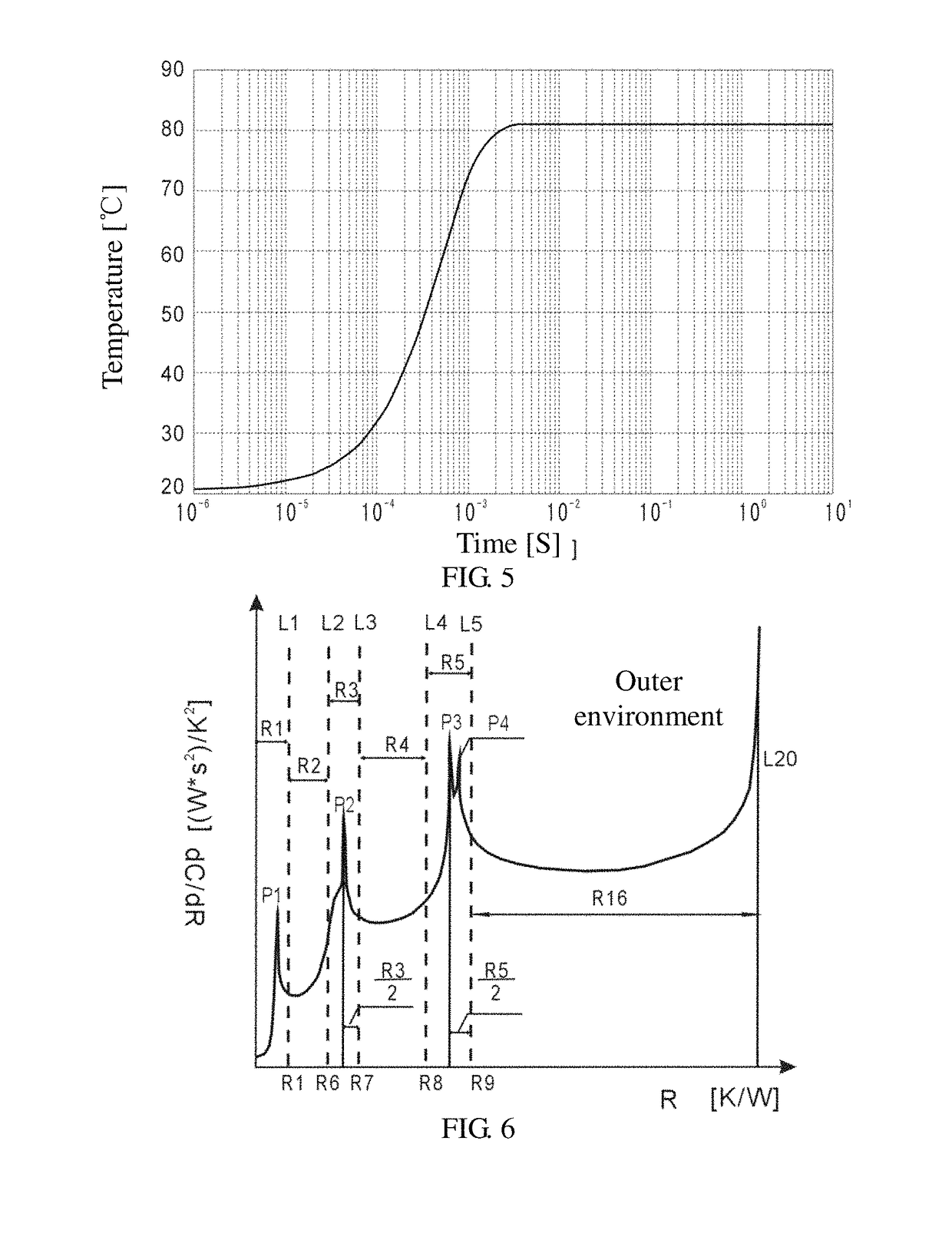Method for analysis of thermal resistance
a thermal resistance and analysis method technology, applied in the direction of thermal conductivity of materials, instruments, calibrators, etc., can solve the problems of inability to obtain precise thermal resistance, inability to judge heat dissipation characteristics and internal defects accurately, and difficulty in measuring thermal resistance, etc., to achieve wide application scope and high accuracy
- Summary
- Abstract
- Description
- Claims
- Application Information
AI Technical Summary
Benefits of technology
Problems solved by technology
Method used
Image
Examples
embodiment 1
[0067]As shown in FIG. 1, in this embodiment, the DUT is an LED, consisting of a PN junction, a chip (1-1), a first contact interface (2-1) and an aluminum substrate (1-3). As the heat source 6 of LED, the PN junction is located in the chip (1-1). The first contact interface (2-1) and second contact interface (2-2) are connecting layer of different materials and shapes respectively.
[0068]The heat conduction process of the LED is equivalent to the one-dimensional heat conduction, as shown in FIG. 2. The heat produced by the PN junction on chip (1-1) flows through the chip (1-1), the first contact interface (2-1), metal substrate (1-2), the second contact interface (2-1) and aluminum substrate (1-3) in turn along the one-dimensional heat flow path 5 as shown in the figure. The upper and lower surfaces of the chip (1-1), metal substrate (1-2) and aluminum substrate (1-3) are respective heat conduction interfaces, and the upper surface is the heat flow input interface (3), while the low...
embodiment 2
[0080]Different from embodiment 1, in embodiment 2, the position of the peak boundary is determined by comparing the area of the each characteristic peak with a designated width with the thermal capacitance value of each heat conduct component 1. The specific method is as follows.
[0081]In a differential structure function as shown in FIG. 7, characteristic peaks corresponding to the chip 1-1, metal substrate 1-2 and aluminum substrate 1-3 respectively are P1, P2 and P3. Theoretically, the area of each characteristic peak P is equal to the thermal capacitance value of the corresponding heat conduction component 1.
[0082]The characteristic peak corresponding to the chip 1-1 of the LED is P1; the left boundary of the peak is y-axis, and the corresponding x-coordinates of the right boundary L11 are R1.
[0083]The characteristic peak corresponding to the metal substrate 1-2 of the LED is P2. The −coordinates of the peak are taken as symmetric points to draw two divisions L14 and L15 at the ...
embodiment 3
[0087]Different from embodiment 1, in embodiment 3, the thermal resistance of the contact interface 2 is obtained by comparing the thermal capacitance of each heat conduct component 1 with the integral structure function. The specific method is as follows.
[0088]FIG. 8 shows the heat resistance integral structure function of LED. The x-coordinates of the integral structure function are the cumulative thermal resistance of the PN junction of the LED and each heat conduct component 1 or the contact interface 2, and y-coordinates are the cumulative thermal capacitance of the PN junction of the LED and each heat conduct component 1 or the contact interface 2. Each section of the curve corresponds to the chip 1-1, the first contact interface 2-1, metal substrate 1-2, the second contact interface 2-2 and aluminum substrate 1-3 from the left to right.
[0089]As shown in FIG. 8, in the integral structure function, each point corresponding to the apex of the characteristic peak in the different...
PUM
| Property | Measurement | Unit |
|---|---|---|
| thermal resistance | aaaaa | aaaaa |
| temperature | aaaaa | aaaaa |
| capacitance | aaaaa | aaaaa |
Abstract
Description
Claims
Application Information
 Login to View More
Login to View More - R&D
- Intellectual Property
- Life Sciences
- Materials
- Tech Scout
- Unparalleled Data Quality
- Higher Quality Content
- 60% Fewer Hallucinations
Browse by: Latest US Patents, China's latest patents, Technical Efficacy Thesaurus, Application Domain, Technology Topic, Popular Technical Reports.
© 2025 PatSnap. All rights reserved.Legal|Privacy policy|Modern Slavery Act Transparency Statement|Sitemap|About US| Contact US: help@patsnap.com



